Based on feedback from readers who enjoyed seeing how the other side operates based on my interactions with Debunk the Funk and Sense_Strand, from time to time I will provide similar encounters I experience on Twitter if I think that the information can be of benefit. This may come in the form of highlighting the use of logically fallacious reasoning or spotlighting new forms of attacks against the “no virus” position. While these encounters can be tedious, they do offer valuable insight into the kinds of arguments we regularly face as well as the type of people we are up against. While I wish that exchanges on Twitter were far more respectful and conversational in nature, it is clear that these are battles to be fought. They are not meant to persuade the other side on our positions as that ship has long since sailed. They are to win over the minds of those who may be sitting on the sideline.
In this edition, I am providing highlights from recent exchanges with a few users, one of whom claimed to be a scientist. The conversation mostly focused on the cell culture method used by virologists as indirect evidence that a “virus” exists within the fluids of a sick host. For those unfamiliar, cell cultures are a method devised by John Franklin Enders in 1954 as a way of growing “viruses” that is still in use by virologists today. The cell culture method involves taking the host fluids, which have been added to “viral” transport medium (VTM) containing antibiotics, antifungals, fetal cow blood, and other nutrients and chemicals, and mixing it into either an animal or cancer cell maintained within the same materials. This unpurified mixture of host and foreign elements is incubated for days until the cell dies. This pattern of death, known as the cytopathogenic effect (CPE), is used as indirect evidence that a “virus” is present and accounted for within the fluids.
Virologists use the cell culture experiment as a way to “detect” a “virus” and claim that it is present within the host fluids without ever identifying the “viral” particles prior to the experiment taking place. They claim that the observation of the CPE in the culture is evidence that the “virus” replicated. They then take images of the resulting cell debris and pick random particles out from amongst a sea of similar and identical ones that fits their preconceived idea of what a “virus” is supposed to look like. Virologists will use the supernatant (the overlying top layer of the culture) from their toxic soup and inject this in various ways into animals in order to attempt to prove pathogenicity.
The cell culture experiment is the bedrock of virology. The entire foundation for what virology is has been built upon this practice since 1954. However, is this method that virologists have relied upon for nearly 70 years even a valid scientific experiment to begin with? Let's define what a scientific experiment consists of and see what we can find out. According to ScienceNotes.org, a scientific experiment is a part of the scientific method that simply tests the hypothesis, which is an explanation for a potential cause-and-effect relationship:
Experiment Definition in Science – What Is a Science Experiment?
In science, an experiment is simply a test of a hypothesis in the scientific method. It is a controlled examination of cause and effect. Here is a look at what a science experiment is (and is not), the key factors in an experiment, examples, and types of experiments.
Experiment Definition in Science
By definition, an experiment is a procedure that tests a hypothesis. A hypothesis, in turn, is a prediction of cause and effect or the predicted outcome of changing one factor of a situation. Both the hypothesis and experiment are components of the scientific method. The steps of the scientific method are:
Make observations.
Ask a question or identify a problem.
State a hypothesis.
Perform an experiment that tests the hypothesis.
Based on the results of the experiment, either accept or reject the hypothesis.
Draw conclusions and report the outcome of the experiment.
https://sciencenotes.org/experiment-definition-in-science/
The cell culture method does meet the definition of an experiment in that it does look for a cause-and-effect relationship. Virologists claim that the “viral” particles are the cause of the cytopathogenic effect seen during the culture experiment. However, this is actually backwards as virologists created an experimental effect in a lab in order to claim a cause that was never present to begin with before the experiment ever took place. This is logically fallacious and ultimately unscientific.
In order to show how the cell culture is not a valid scientific experiment, we need to determine a few things first. To begin with, what is the hypothesis that the cell culture is supposedly testing? In order to establish a hypothesis, researchers need three things:
Observation of a natural phenomenon.
Identification of the Dependent Variable (the observed effect).
Identification of the Independent Variable (the presumed cause).
This is where things immediately fall apart for virology. The hypothesis is an explanation for an observed natural phenomenon. Thus, we must ask, what is the observed natural phenomenon for the cell culture experiment? The CPE that the virologists use as a sign for the presence of the “virus” is manufactured and created in a lab under highly unnatural experimental conditions. Virologists can not see “viruses” entering a cell naturally, causing the cell to break apart and die. There is no basis to even conclude that the CPE observed is caused by a “virus” at all as the cells are outside of their natural environment and are subjected to numerous substances that they would not encounter naturally. Thus, we have an experiment that does not have an observed natural phenomenon, and without this step, there is no valid dependent variable (DV) to use as an effect. We have a lab-created effect produced by unnatural means masquerading as a natural phenomenon.
While the lack of a valid DV is a pretty glaring problem, there is another issue preventing the cell culture from being a valid scientific experiment. The assumed “viral” particles do not exist prior to the experiment taking place. This goes against the scientific method as the independent variable (IV) must exist prior to the experiment and can not be a creation of the experiment.
The IV must be present during experimentation so that it can be varied and manipulated by the researchers in order to see what effect it ultimately has.
Without this, the experiment is not scientific. Thus, while the cell culture is an experiment that looks to establish a cause-and-effect relationship, it is a pseudoscientific experiment as it does not begin with an observed natural phenomenon and it creates a cytopathogenic effect (DV) in order to blame on a non-existent “virus” (IV). Therefore, we are left with a fraudulent hypothesis that not only begs the question of a “virus” by assuming such a thing exists in the first place, it also affirms the consequent to be true:
If there are virus particles in the fluids of a sick host, then there will be a cytopathogenic effect observed in the culture.
There is a cytopathogenic effect in the culture.
Therefore, there are virus particles present in the fluids of a sick host.
The cell culture experiment is, by its very essence, logically fallacious and a perfect example of pseudoscience at its finest. Hopefully the quick explanation helps to shed light on why, even though the cell culture as used by virologists is an experiment, it is not a scientific experiment. This concept was a major point of contention during these proceeding exchanges on Twitter.
The Cell Culture Is Not An Experiment?
During a recent encounter, I asked a user going by HawkInATX (apparently a fellow Hawkeye) whether he had any scientific evidence for the existence of any “virus.” I laid out my normal request that the assumed “viral” particles are to be purified and isolated directly from the fluids of a sick host without culturing, confirmed to be so via electron microscopy, and then proven pathogenic naturally by adherence to the scientific method. This is the minimal necessary information that should be found within every single foundational paper claiming the existence of any “virus.” As can be seen, he responded with a link.
The paper provided was a chapter from the Virology Methods Manual published in 1996. The chapter itself was about the “isolation” procedures for tissue cultures and embroynated eggs. From the text, they note the addition of many chemicals from the “viral” transport media at the time of sample collection. They also describe “isolation” from cell cultures:
Virus isolation and quantitation
“Nasal swabs are the easiest specimens to collect for respiratory viruses and are also the best specimens (i.e., they contain the most virus) for the majority of the respiratory viruses described here. For nasal swabs, urogenital calginate swabs are inserted into the nasal passages, gently rotated to absorb mucus and cells, and then vigorously twirled into 2 ml of transport medium (such as tryptose phosphate broth with 0.5% gelatin, veal heart infusion broth, or trypticase soy broth), preferably without antibiotics.”
“When processing for viral isolation, the specimens are treated with antibiotics, vigorously mixed, clarified at 1000 g for 3 min at 4°C to remove cell debris and bacteria, and inoculated onto appropriate cell culture monolayers in glass tubes. The cultures should include a continuous human epithelial line (e.g., HEp2, A549, HeLa), a human embryonic lung diploid fibroblast cell strain (e.g., HLF, HELF, MRC5, Wl38), human lung mucoepidermoid cells (NCI-H292) to replace MK cells for most applications (Castells et al 1990; Hierholzer et al 1993b), and human rhabdomyosarcoma cells (RD) for the broadest coverage of viruses within practical limitations (Hierholzer 1993; Hierholzer and Hatch 1985; Matthey et al 1992; Meguro et al 1979; Smith et al 1986; Woods and Young 1988). The Epstein-Barr virus (EBV)-transformed marmoset cell line is particularly useful for isolation of measles virus. The inoculum (0.5 ml tube -1) is adsorbed to the cell monolayers (whose growth medium has been decanted) for 1 h at ambient temperature, and the cultures are then fed with maintenance medium and incubated at 35-36°C for several weeks, with subpassaging as required.”
https://www.sciencedirect.com/science/article/pii/B9780124653306500038
As the chapter presented methods that did not involve the purification and isolation of the assumed “viral” particles directly from the fluids and instead utilized cell cultures, it was the exact opposite of what I had asked for. Naturally, I had to point this out to Hawk.
Interestingly, Hawk wanted to know why it mattered that he provided a cell culture procedure when he was asked to provide evidence without the use of the cell culture. I made it very clear that the assumed “viral” particles must exist before any experimentation can begin. Hawk oddly responded that the cell culture is not an experiment. This is a new excuse that I have only recently heard, and it seems that this is the current attack against claims that the cell culture must adhere to the steps of the scientific method in order to be valid.
When I pointed out that the cell culture method used in virology is most definitely an experiment, Hawk seemed to relent a little by admitting that it “can be” an experiment.
After this exchange, I noticed a response from another user by rhe name of Michael Kitching, a cardiovascular toxicologist and a post-doctoral representative of the Cardiovascular Toxicology Specialty Section of the Society of Toxicology. He accused me of ignoring his comments. I was unsure what he was referring to as I had not seen his comments, and so I asked him if the cell culture was looking for an effect in order to claim a cause. He, too, seemed to be under the impression that the cell culture is not an experiment as they are just “growing viruses” in order to experiment with. He claimed that causation experiments were performed later.
As I had missed his previous comment, I decided to search out his response to see what all the fuss was about. Michael attempted to make the distinction between culturing cells for an experiment and culturing cells in an experiment. He had jumped into the conversation and seemed to not realize that we were discussing the culturing of “viruses,” not cells. 🤷♂️
Of course, I was given the adorable title of Dr. Google for my efforts in attempting to have a civil discussion. Why these “academics” feel the need to talk down to others is a curious thing. Superiority complex perhaps? 🤔
In any case, Michael's proceeding example as to what constitutes a cell culture experiment was exposing the cells to PM2.5 particles in order to see what effect that this has on the cells. In other words, according to Kitching, an experiment is used to determine a cause-and-effect relationship. I obviously had to point out that Mr. Kitching had just described the cell culture experiment to a T as virologists look for an effect (CPE) on the cell that they erroneously attribute to a “virus” (the cause). Virologists assume that these “viral” particles are within the fluids that the cells are exposed to.
After pointing this out, Michael went silent for a long time, and so it was back to the Hawk to continue our previous discussion. After I once again shared that the cell culture, as used by virologists, is an experiment, I was told that I had no clue what I was talking about. I decided to prod Hawk to find out whether the cell culture looked for an effect in order to determine a cause. His response was baffling.
Hawk proceeded to point out a cause and an effect during culturing, and then, for some reason, claimed that there was no cause-and-effect relationship being investigated after he had just provided one. I had to explain that, while he did indeed provide examples of cause-and-effect, his cause and his effect were actually wrong. I also pointed out the logically fallacious reasoning employed by virologists and Twitter users like Hawk defending them.
Hawk's trail on that thread ended, but he eventually found his way into another.
The Scientific Method Is Made Up?
After a user named Cathy had elephant-hurled random links to unrelated studies as proof of “viruses,” I asked her to provide evidence fulfilling the requirements that I had asked Hawk for previously. Cathy agreed that both of the requirements that I had laid out had been satisfied, but she decided that she didn't need to supply this evidence as she argued that I would dismiss it anyways.
After multiple attempts to get Cathy to fulfill her burden, she finally provided a paper that she said satisfied the requirements that she had agreed had been fulfilled. However, the paper that she provided was about the purification and “isolation” of exosome RNA, not intact exosomes and definitely not “viruses” directly from the fluids without culturing. The paper actually made the case that “viruses” and exosomes can not be separated from each other as they co-sediment together with protein aggregates and defective particles and their RNA get mixed. The authors considered it a near impossible task to separate these entities and stated that new methods must be devised in order to do so:
Purification Methods and the Presence of RNA in Virus Particles and Extracellular Vesicles
“The fields of extracellular vesicles (EV) and virus infections are marred in a debate on whether a particular mRNA or non-coding RNA (i.e., miRNA) is packaged into a virus particle or copurifying EV and similarly, whether a particular mRNA or non-coding RNA is contained in meaningful numbers within an EV. Key in settling this debate, is whether the purification methods are adequate to separate virus particles, EV and contaminant soluble RNA and RNA: protein complexes. Differential centrifugation/ultracentrifugation and precipitating agents like polyethylene glycol are widely utilized for both EV and virus purifications. EV are known to co-sediment with virions and other particulates, such as defective interfering particles and protein aggregates.”
“For RNA viruses as well, RNAs other than full-length genomic RNA have been reported in mature virion preparations. Is it possible that EV may have contaminated the virion preparations in these studies? Has there been enough experimental evidence to rule out EV contamination?“
“Co-purified RNAs within a heterogeneous mixture can obscure definitive and functional research on EV as well as viruses. Separating virions from EV, however, is much more challenging. Thus, we will discuss how such contamination—if any—can be removed by different purification methods.”
“Separating EV from virus particles, particularly exosomes and microvesicles, has proven to be a considerable hurdle in the field of host–pathogen interactions. Chugh et al. [36] and Bess et al. [77] showed that virions and EV co-sedimented in various isolation techniques due to their similar size, density, and sedimental velocity [31]. Other studies [25,27,31,32,36,48,77] also showed that neither differential centrifugation nor commercial exosome precipitation reagents separate virions from EV.”
“Since it is near impossible to separate EV from virions by biochemical methods, the absence of EV is typically demonstrated by the absence of EV protein markers.”
“Still, better and more carefully validated purification methods are necessary to prepare cleaner virion and EV preparations before many of the proposed biological functions that have been associated with EV can be accepted. Affinity reagents, in particular, reveal surprising heterogeneity amongst EV. Describing and limiting the increasing complexity of EV may seem burdensome, but it is essential for establishing biological relevance.”
https://www.ncbi.nlm.nih.gov/pmc/articles/PMC7552034/
Thus, this paper was yet another swing and a miss. I asked Cathy how her paper met the requirements that she had agreed to and she predictably fell silent. However, as luck would have it, Hawk found his way into this conversation in order to accuse me of not reading the paper.
As I had read the paper two years ago, I was very familiar with it and I knew full well that it did not satisfy any of the scientific requirements that I had laid out that Cathy claimed had been fulfilled. As she had fallen silent, I asked Hawk to fill in for her and to explain how this paper met the requirements.
Hawk decided that he did not need to explain how any paper fulfilled my “made up” requirements. He felt that all he had to do was accuse me of not reading the paper as if no one would notice that his comment lacked any substance whatsoever. I was not sure how asking for evidence adhering to the scientific method is “made up” nor how it is irrelevant, so I invited Hawk to explain why he had previously attempted to fulfill my “made up” and “irrelevant” requirements with a paper of his own.
Hawk decided to shift his response to claim instead that it was my isolation requirement that was “made up” and “irrelevant.” I tried to get an answer as to how this was irrelevant and Hawk gave yet another baffling response.
Hawk claimed that the purification and isolation of the “virus” directly from the fluids of a sick human or animal is “exactly how it is regularly done.” I had to know, if he believed that this is how it is always done, why was my asking for this evidence somehow irrelevant now? Hawk then decided that my “demanding” that cultures are not used is the “irrelevant and stupid” part, thus negating his previous comment about purifying and isolating the particles DIRECTLY from the fluids as being “how it is always done.” When I asked him to explain why this is irrelevant, Hawk decided to baffle me once again.
Instead of explaining the reasoning for his claim that the stipulation that cell culture is not used is irrelevant, Hawk wanted me to explain why it is a relevant stipulation. This was an attempt by Hawk to shift the burden away from himself so that he did not have to back up his position. I wasn't willing to let him off that easily.
Hawk thought that my asking him to show why something is irrelevant was akin to proving a negative. This is not the case as proving a negative tends to deal with non-existence. This was about determining relevancy. If Hawk's claim is that asking for evidence without cell culture is somehow irrelevant, the onus is for him to provide his reasoning for why that is the case. One can not go around blanket-claiming anything that they disagree with as irrelevant and then demand others to prove relevancy when they are challenged on their own claim. As Hawk was unwilling to provide his reasoning for why he claimed the cell culture stipulation was irrelevant, he showed that he had no basis to make such a claim.
Hawk decided that, rather than explain his reasoning, he would resort to insults and claim that I was being logically fallacious and that I was misrepresenting the scientific method. He then doubled-down on his belief that it was my burden to disprove his claim of irrelevance.
Hawk clearly had forgotten that I had already explained to him previously why this stipulation mattered in our prior exchange.
Thus, I decided to spell it out for him once again.
To this, Hawk argued that the “virus” is not created during cell culturing…by arguing that more “virus” is created during cell culturing. 🤷♂️
For some reason, he threw in a random example of monkey sex as a comparison to how “viruses” are created during the cell culture. I guess this is how “viruses” are created? 👇
I decided to explain that, regardless of monkey sex, Hawk could not possibly know that “more” of a thing was created if that thing was never observed to begin with. One would obviously have to identify the thing first, see how many of the thing existed prior to the experiment, and then observe that there are more of this thing after the experiment. This never happens.
This portion of the thread with Hawk went cold and we never got to the bottom of how monkey's having sex and making babies is the same as “viruses” being created in a cell culture. Our conversation then took a turn into the effects seen in culturing supposedly being proof that "viruses” are growing. Hawk made the claim that when bodily fluids of a sick person are added to a culture, something grows. When the samples from healthy people are added, nothing grows. Knowing what I know about the control experiments (if done) in virology, they never add a sample from a healthy host, treat it exactly the same as that taken from a sick host, and then see whether or not “something grows.” Thus, I asked Hawk to provide this evidence:
In order to prove this, Hawk, for some reason, focused on bacteria. He supplied me with an image of two Petri dishes with bacterial growth and asked my thoughts.
I actually found this pretty hilarious for a few reasons.
We were discussing “viral” cell cultures, not bacterial cultures which are performed differently.
He used this as an example of cultures from a “sick” person and a healthy person.
The image came from this Facebook post from a nurse: https://m.facebook.com/story.php/?story_fbid=10222688460588977&id=1497508453
Both samples were from the same nurse who never claimed to be sick and the bacteria imaged were said to contain normal flora.
This image was supposed to show that masks block particles the size of bacteria and had absolutely nothing to do with showing that samples from healthy hosts do not cause CPE in culture.
Hawk proceeded to double-down and supplied many more images of bacterial cultures as examples of “viral” cultures showing that no cytopathogenic effect occurs when samples from healthy humans are used. This was disingenous behavior and an attempt to be entirely misleading. The first three links had nothing to do with using sick and healthy human samples and were, instead, showing how washing ones hands reduces bacterial growth on plates. The fourth image had no accompanying link or description.
Unfortunately, Hawk never fessed up as to why he was supplying images of bacterial cultures as evidence to support his position that, when samples from healthy humans are used, they do not result in “viral growth.” I could only conclude that Hawk thought that bacteria and “viruses” are the same thing. 🤷♂️
In a separate thread, Hawk finally admitted something that he had been denying from the very beginning of our conversation.
Hawk now agreed that the cell culture was, in fact, an experiment! After a long-winding road, we had now come full circle!
Sadly, Hawk's newfound realization that cell culturing is an experiment did not last long after I called out his blatant contradiction from his prior stance. He attempted to say that he did not contradict his previous statement by claiming that I had conflated culture EXPERIMENTS from the past with culture EXPERIMENTS using them as a tool. Predictably, the insults soon followed.
Eventually, Hawk took our conversation back to bacteria and I was challenged to identify the red stuff.
Apparently thinking he had me in a “gotcha” moment, Hawk supplied an image of a “viral” culture and asked me what the white spots are.
I recognized the images and wanted to confirm where they had come from. Hawk supplied the link to the CDC's lab-manufactured recreation of the Spanish flu “virus.” The images are of non-specific plaques forming in a cell culture and were not visible “viruses.”
I pointed out that Hawk had only supplied images of CPE and not “virus,” and upon doing so, I got a final baffling response. For someone arguing about the validity of “viral” cell cultures, Hawk didn't even know what CPE stood for. 🤦♂️
As hilarious as it was that Hawk did not know what CPE is, I sadly had to end our chat with his last insult. I had provided plenty of warnings prior to his last retort which he had repeatedly ignored.
Fortunately, Michael Kitching decided to reappear to wrap this all up with a nice little bow. After I had blocked his friend Hawk, Michael decided to claim that his friend had served my rear on a platter. While I understand that everyone sees things through their own lenses, this statement seemed a bit of a stretch to me, especially considering that Hawk did not know what CPE is nor the difference between bacterial and “viral” cultures. I decided to point out examples of both Hawk and Kitching’s ignorance displayed during our exchanges.
Of course, I was told that I was the one arguing from ignorance, despite the fact that Kitching still failed to realize that his description for what a cell culture experiment is matched up exactly with what virologists do during their fraudulent experiments.
Kitching accused me of not understanding his words and taking a desperate attempt to dunk on him even though, contrary to what he asserted, I understood every word he had said.
I don't feel that it was a “desperate dunk.” In fact, I believe Kitching set me up perfectly.
Perhaps his back was still hurting? In any case, according to Kitching, I was acting the fool, which clearly felt like projection to me. Sadly, the nicknames and insults started flowing, which usually is a sign that the conversation has run its course. I gave Kitching a warning to remain civil if he wanted to continue our discussion and that any future insults would signal that he was conceding.
Fortunately, Kitching saved me the trouble of having to sit through any more “muffin” remarks and conceded.
What I have noticed throughout my conversations with many on Twitter is that they regularly attempt to mislead and obfuscate. They like to play with definitions and meanings in an attempt to escape the commonly accepted understandings for what these words mean, whether it is arguing over purification, isolation, or what is or is not an experiment. They will agree to present specific evidence and then supply papers and articles that clearly do not match up with what they agreed to present. These people then argue that the criteria that they agreed to is irrelevant and/or made-up. I am regularly accused of having my own version of the scientific method, even though they will agree beforehand that the steps I present are the scientific method. They will throw out unrelated evidence, such as Hawk did with images of bacterial cultures as a stand-in for “viruses,” seemingly hoping that no one will notice that what is provided is not relevant to the conversation. As these exchanges can be rather confusing as the comments tend to go all over the place, hopefully this format allows for some additional clarity, insight, and understanding. Let me know your thoughts in the comments!
Planet Waves FM - Chiron Return discussed Robert Kennedy Jr.’s Presidency announcement with Michael Bryant and Jesse Zurawell and asked the question - will he save us?
Jon Rappoport took a different approach to examining RFK Jr.'s potential Presidency bid and addressed the calls to attack him.
Christine Massey's "germ" FOI Newsletterserved up another excellent helping of Freedom of Information responses as well as other enlightening information.
Mike Wallach: The Viral Delusionlooked at all cause mortality data and showcased how this exposes the lie.
Dr Sam Bailey examined the doctors who are fading back into the shadows after having championed the "Covid” interventions.




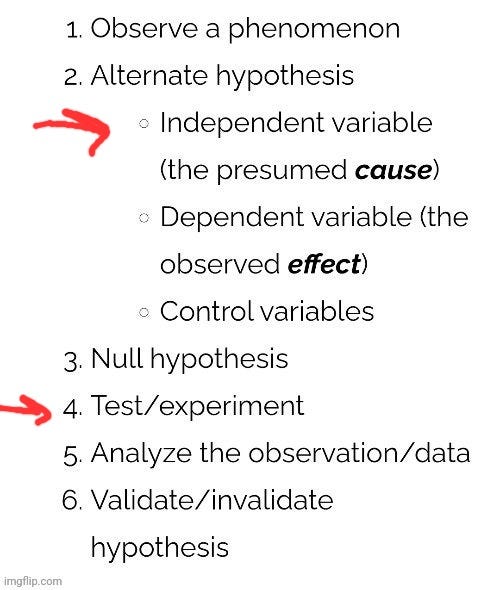

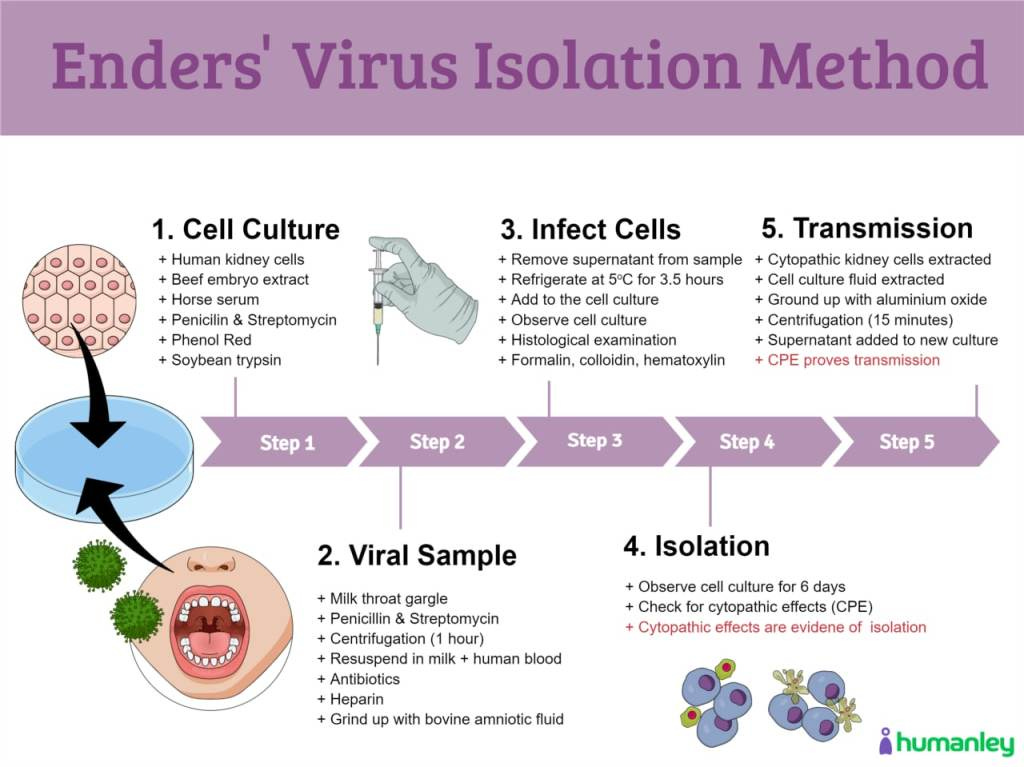

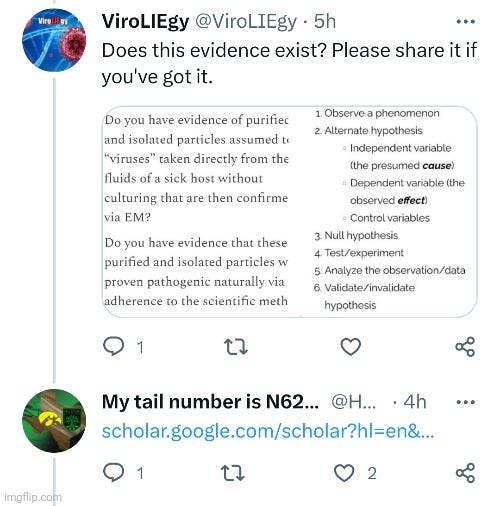

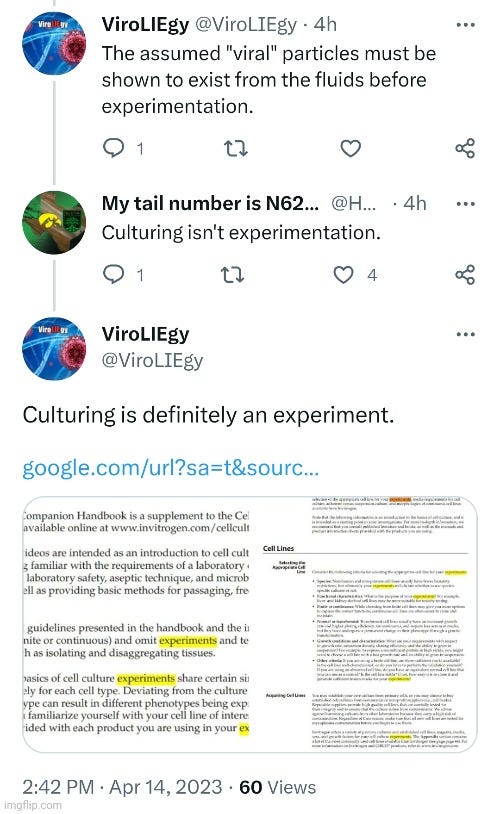

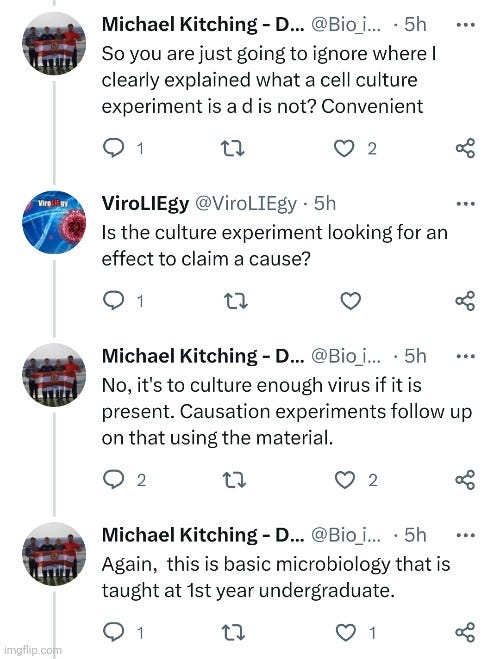


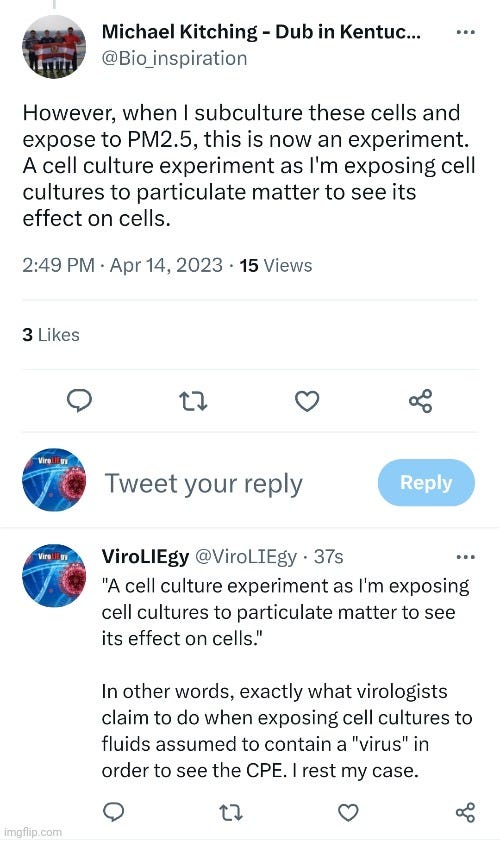


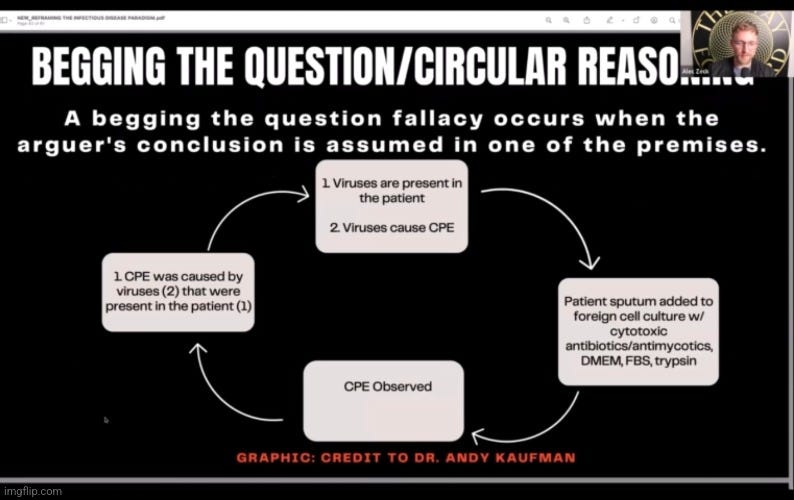

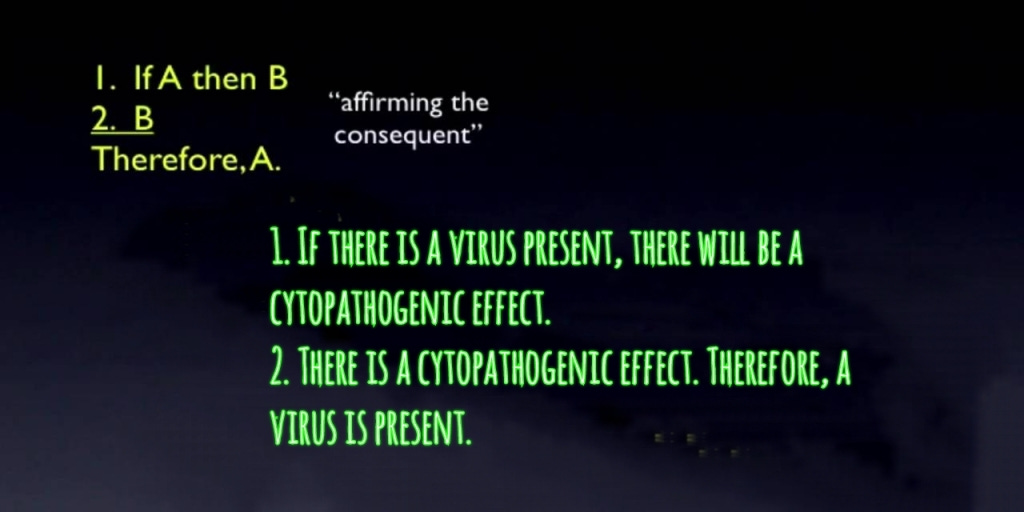
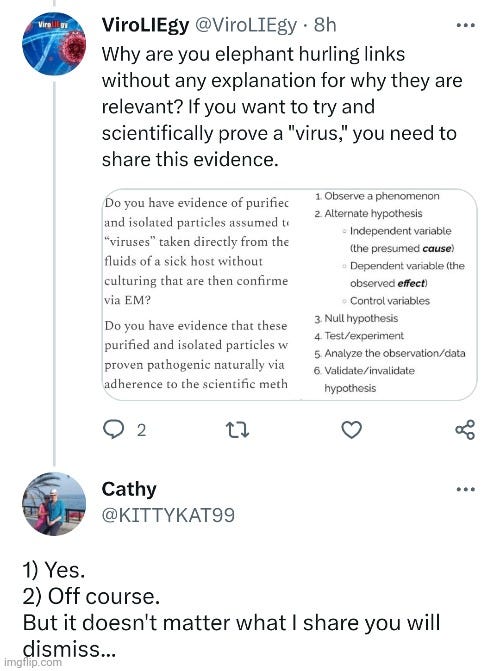
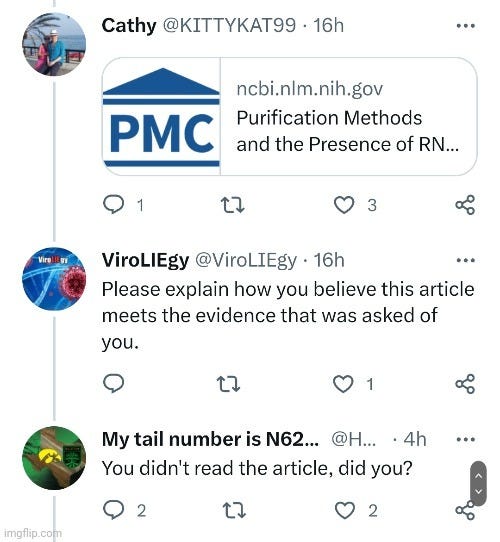
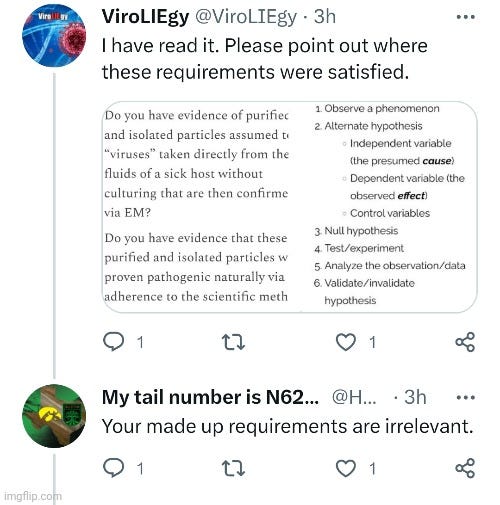

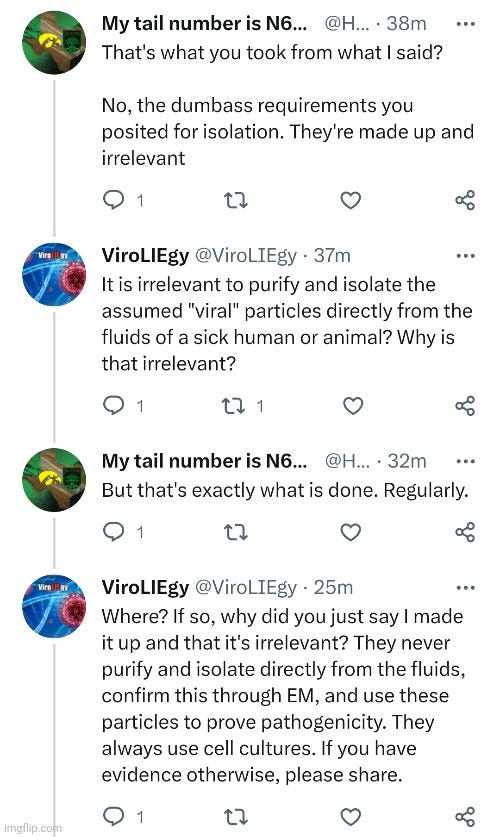

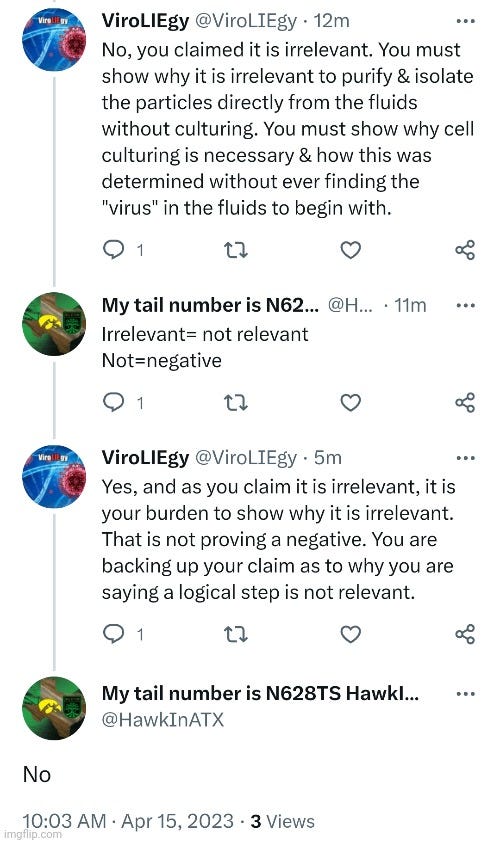
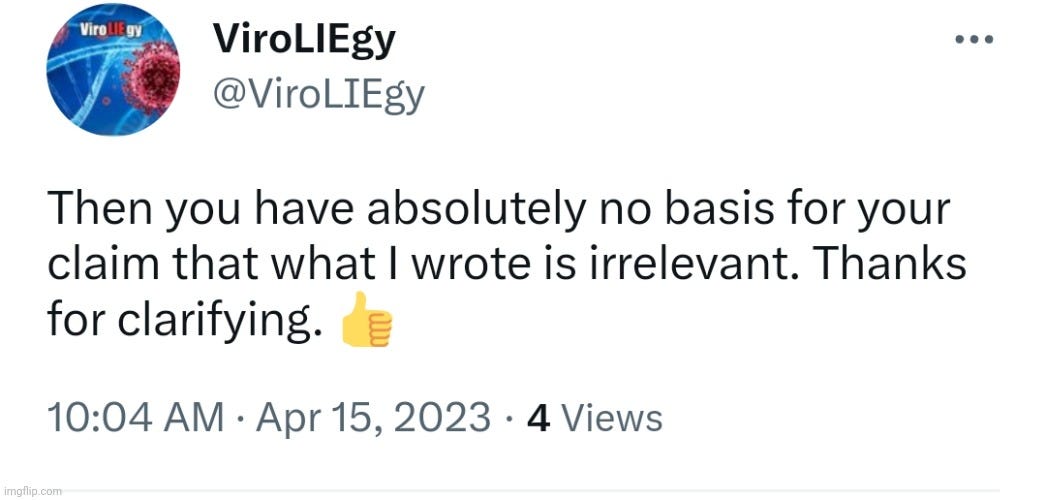

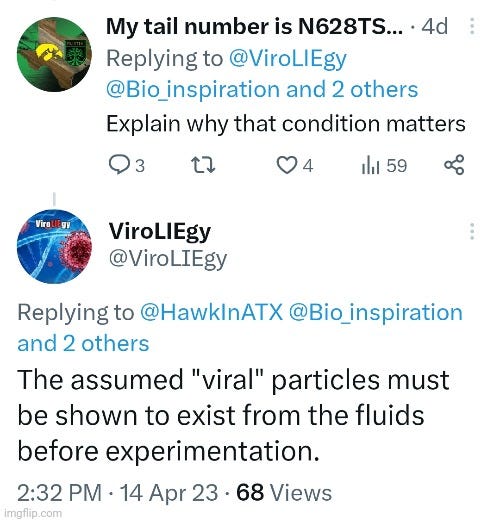
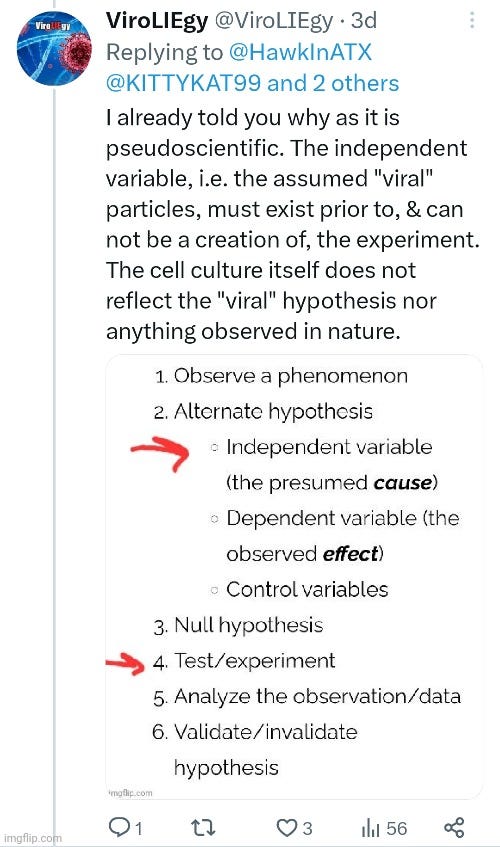


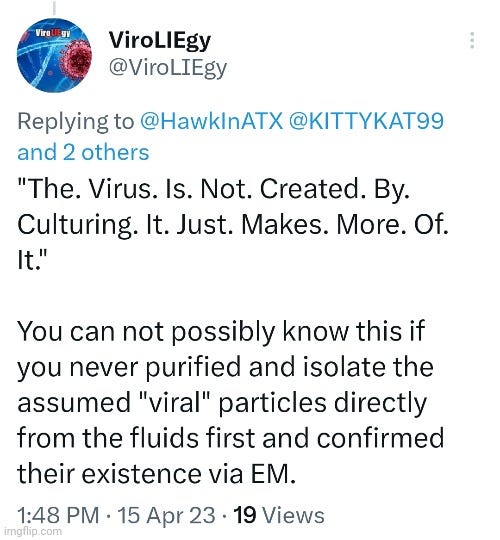


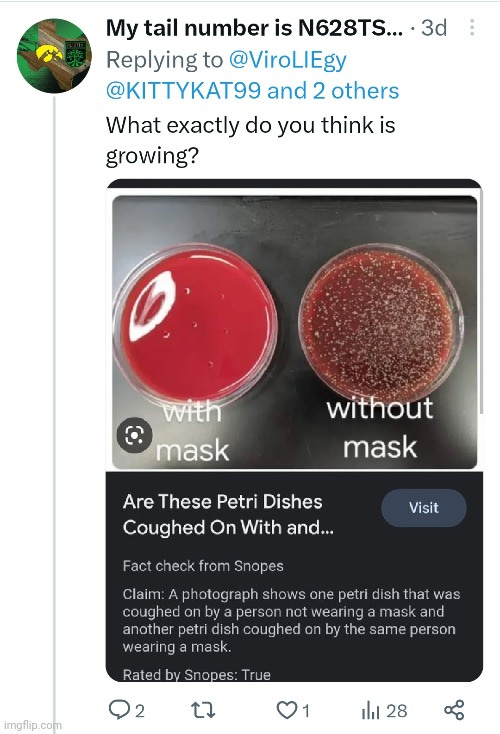
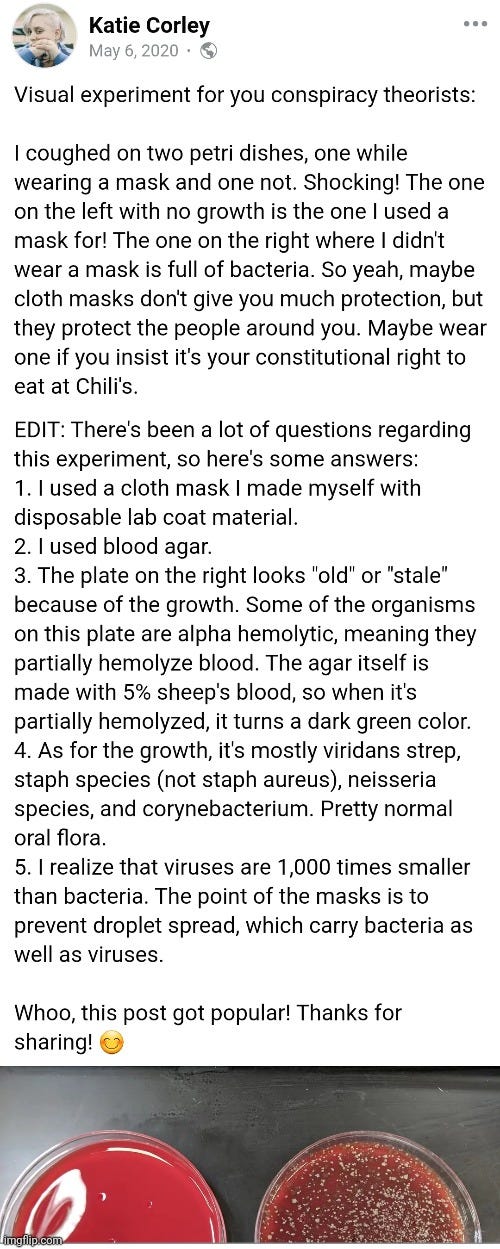
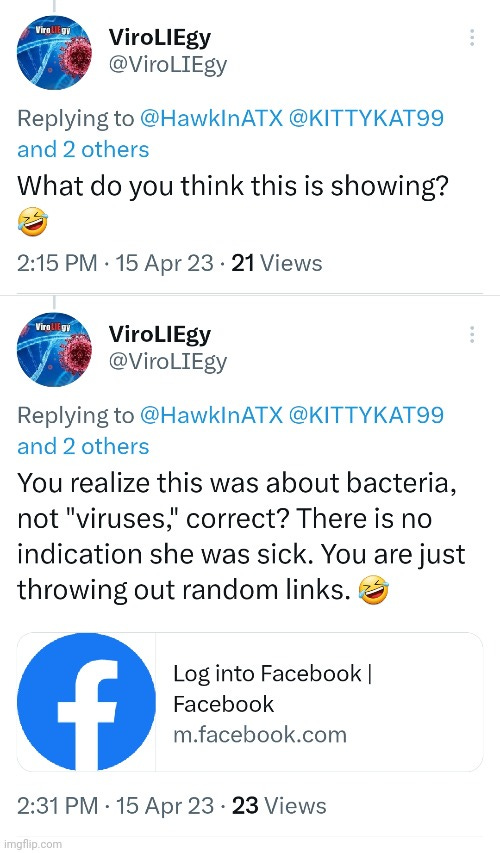

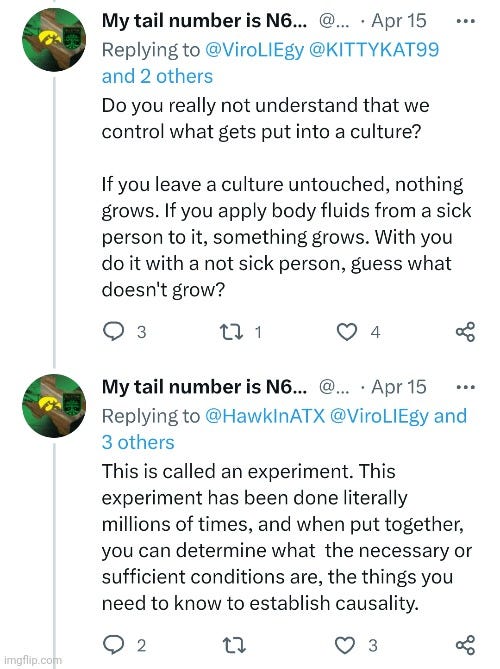
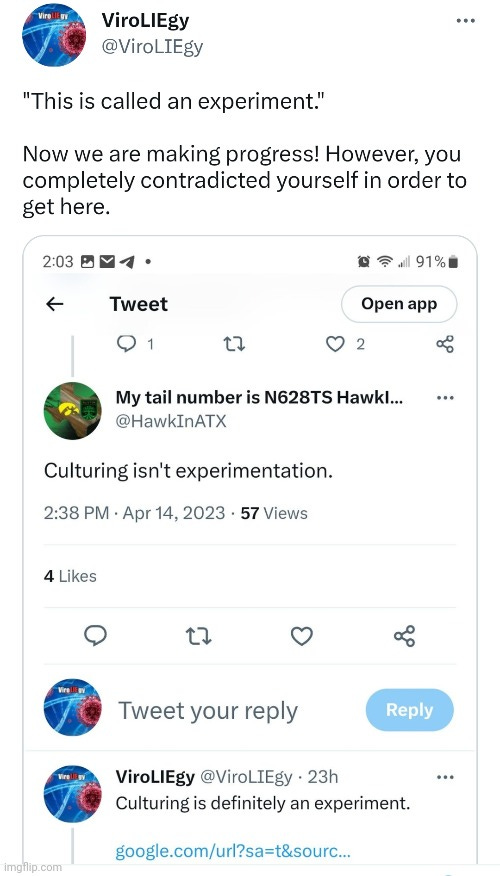
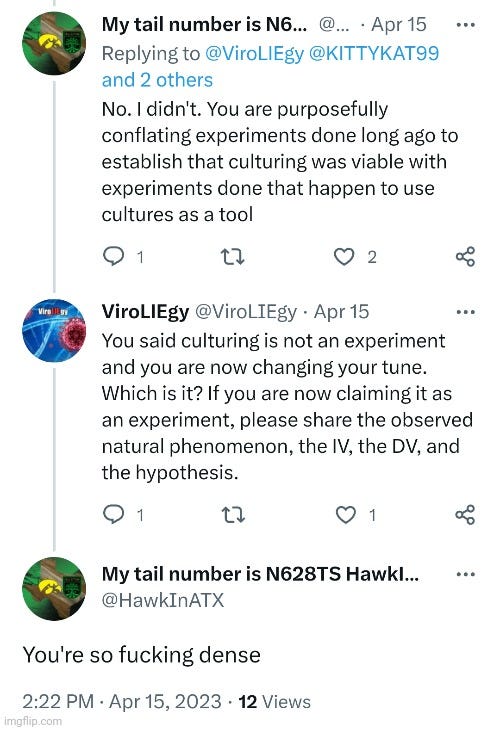
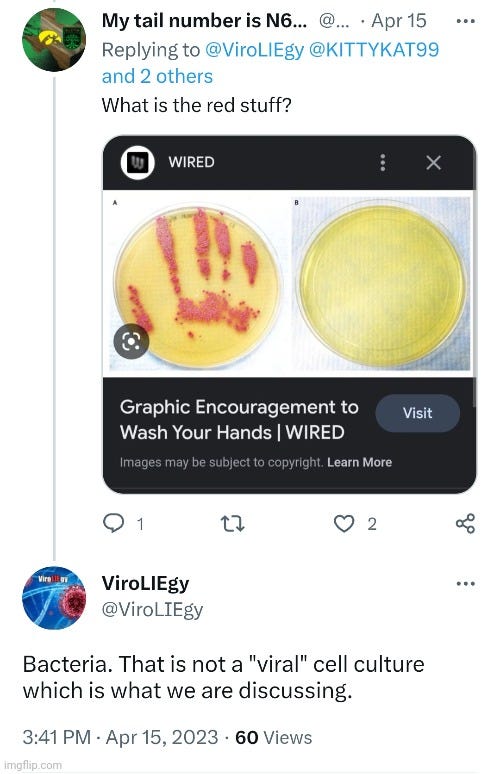
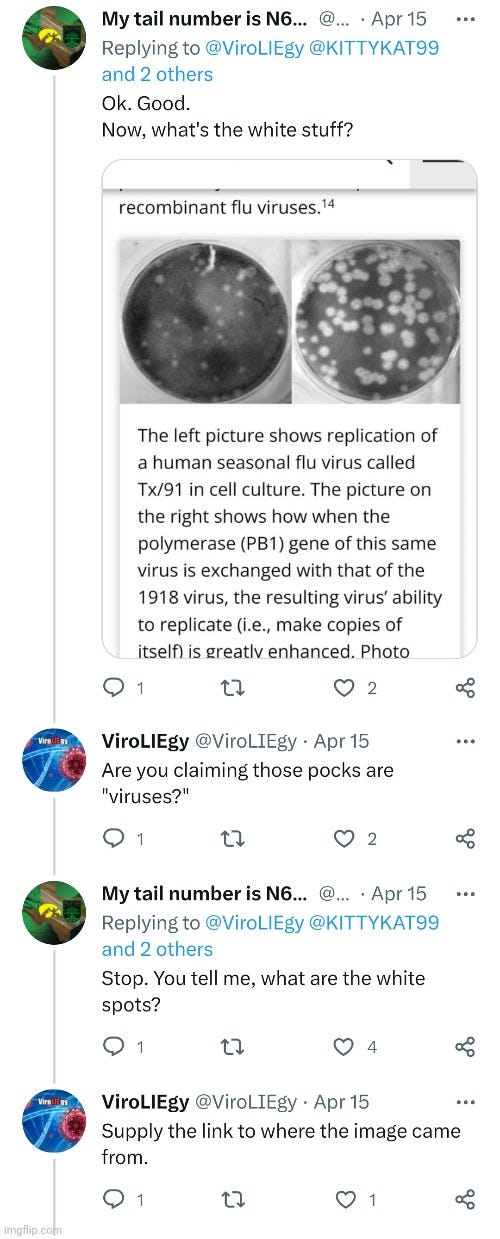

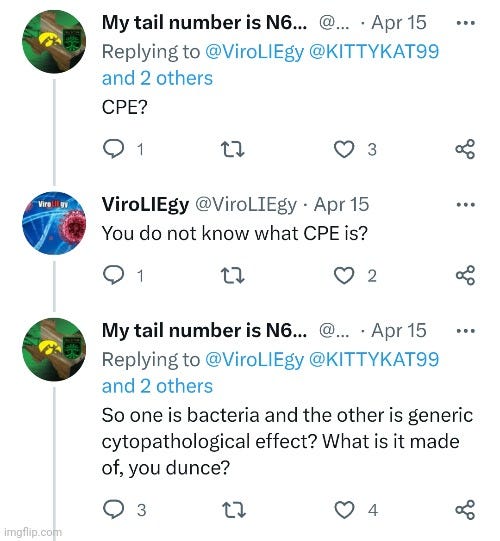
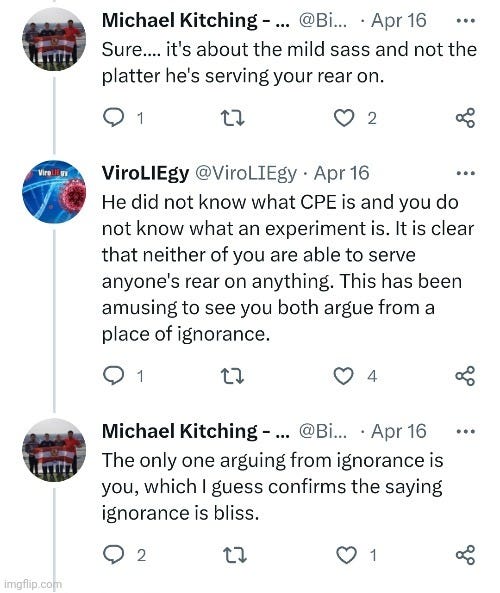
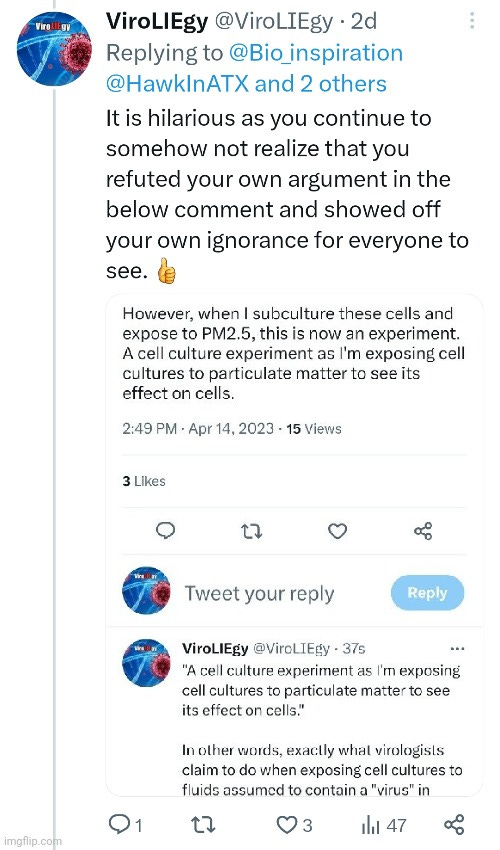
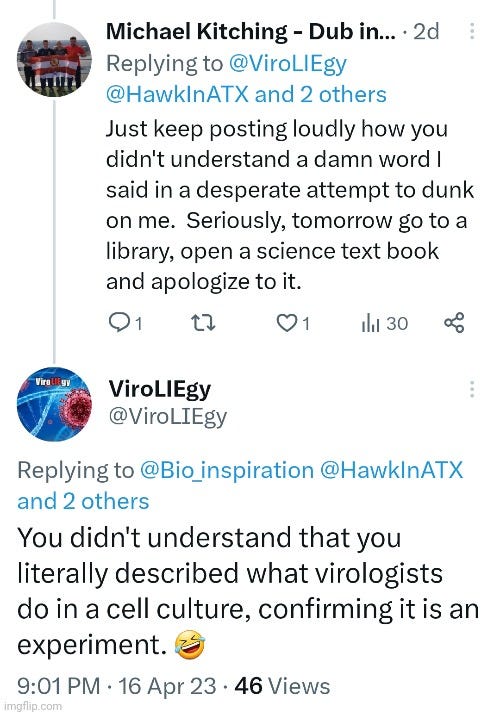






You deserve a medal, Mike. You'll go down in history :)
Not only amazingly clear as always, but also amazingly funny. The no-virus team is truly a joyful place. Thanks for making be laugh (I'm still laughing - especially about the monkey-sex part).